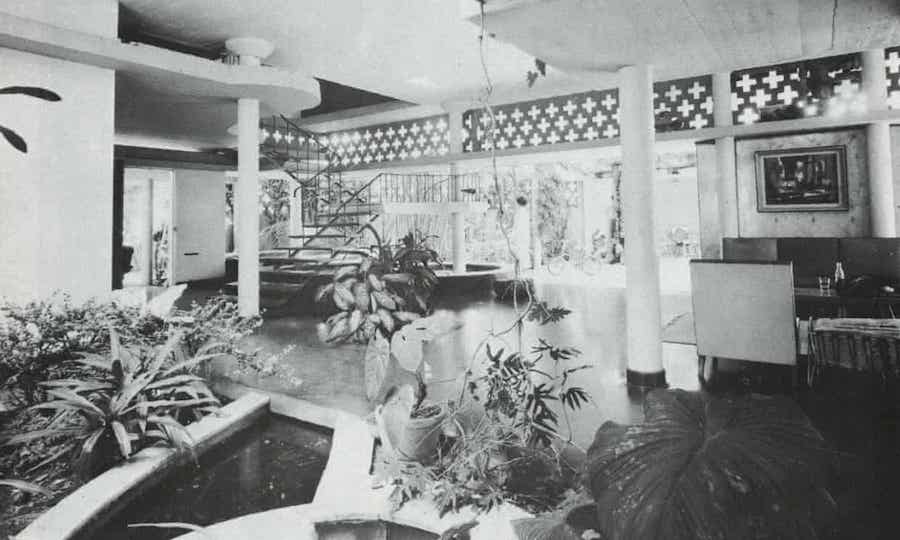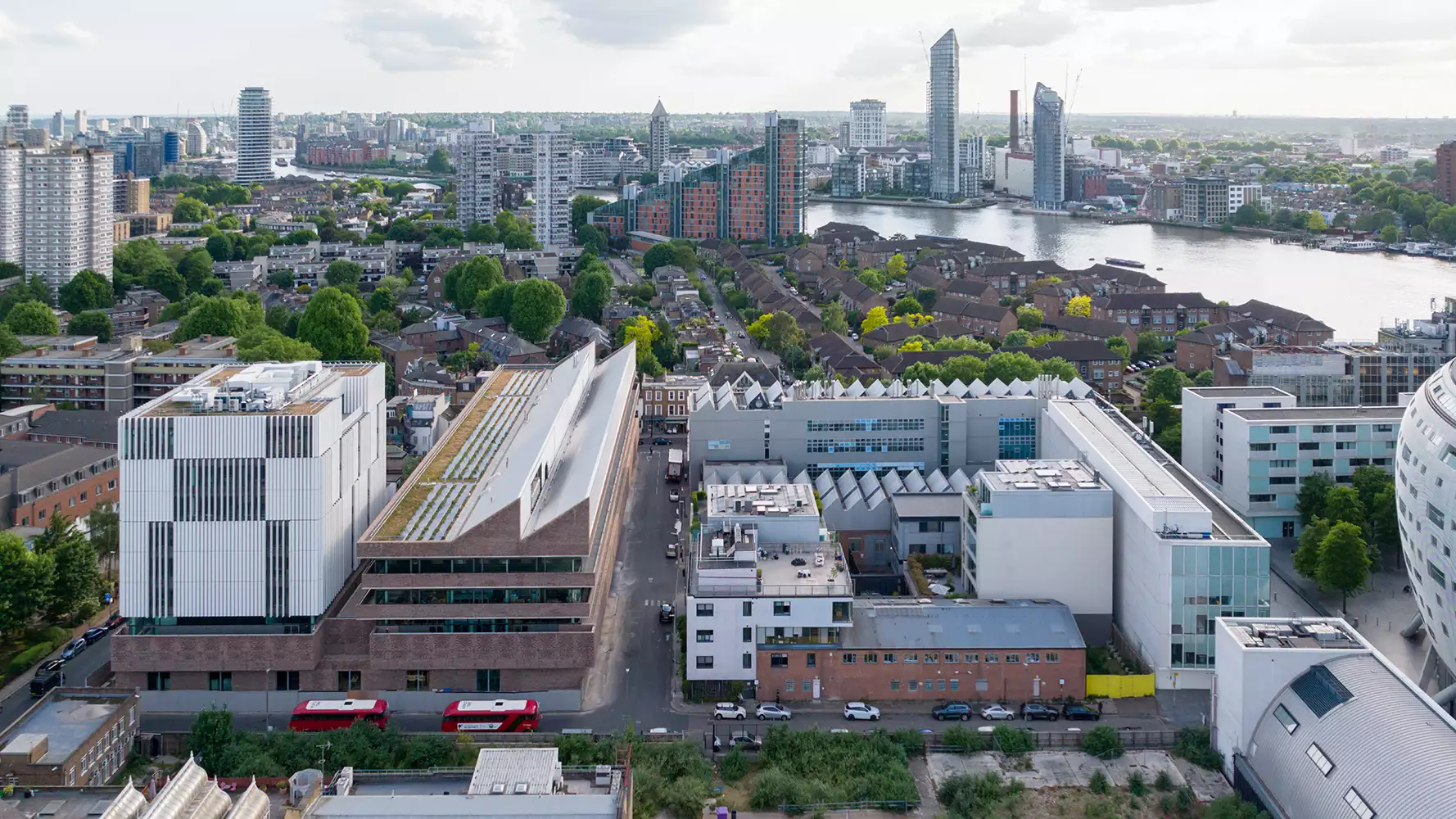Minnette de Silva was an architect whose life and work were so potent and pioneering that we have to ask how it is possible that she has gone largely unnoticed for decades. “Asian Woman Architect” was a term she used to introduce herself. Born in Kandy, Ceylon (now Sri Lanka) in 1918, she had many firsts to her name—first Sri Lankan woman to be trained as an architect; first woman to establish her own practice—called the Studio of Modern Architecture—in the country; first Asian woman to be elected an associate of the Royal Institute of British Architects (in 1948); and the first woman to be awarded the Sri Lanka Institute of Architects gold medal (in 1996).
On March 4 and 5, the Womxn in Design and Architecture (WDA) Conference at the Princeton University School of Architecture brought together architects and scholars to shine new light on this remarkable designer and her work. Speakers including Anooradha Iyer Siddiqi (an assistant professor at Barnard College and Columbia University’s Department of Architecture), Yasmin Shariff (Director of Dennis Sharp Architects), and Gillian Darley (architectural historian, biographer, and journalist), among others, gathered remotely, for “Minnette de Silva: Constructive Dialogues,” to discuss her unique position in 20th century architecture, and to explore her work, which knit local and cultural elements with the language of global modernism. In the keynote presentation, Siddiqi introduced de Silva as not only a practitioner but “as an anti-colonial-environmental-feminist thinker and activist whose career captures the intersections of ideas on gender, race, architecture, and heritage.”
Despite growing up in a liberal-minded, politically engaged, privileged family, de Silva had to fight to pursue architecture. During a period of enormous political and religious turmoil on the subcontinent, just before independence from Great Britain, women still were not allowed to travel abroad for education, let alone study at home. But in the early years of World War II, with support from a relative, de Silva managed to get to Bombay (now Mumbai), to study at the Academy of Architecture (a private institution that Gajanan Baburao Mhatre, then President of the Indian Institute of Architects, ran out of his office) before attending the Government College of Architecture at the Sir J.J. School of Art, beginning in 1941. She was a lone woman among 40 men there.
In her autobiography, “The Life & Work of an Asian Woman Architect,” de Silva wrote: “From my preliminary trip to Bombay onwards, I began to realize that the spectrum of educated and intellectual society there—artists, writers, businesspeople—was very small and inter-related. The professional and political worlds were one. I met them all, eventually becoming part of it.” These connections were formed largely thanks to de Silva’s elder sister Anil, who was a journalist, an art historian, and a great influence in the architect’s life. Anil was an editor at the arts magazine called Modern Architecture Research Group or Marg, founded in 1945 by the notable writer Mulk Raj Anand, which is still published today.
In 1943, two years into architecture school, de Silva was expelled for taking part in the student strikes over the arrest of Mahatma Gandhi—and for not apologizing for doing so. She moved to Bangalore to work for the architect and urban planner Otto Koenigsberger and then, in 1945, left for London to study at the Architectural Association. She became a contributing editor at Marg and represented the magazine at the 1947 Congrès Internationaux d’Architecture Moderne (CIAM) in Bridgewater, England, a conference attended by major figures in modernism including Le Corbusier, Walter Gropius, and Jane Drew.

Chandra Amarasinghe House, Colombo, 1960
After receiving a commission to design a house for family friends, Algy and Letty Karunaratne, de Silva returned to Kandy in 1948 and started her own practice. Often described as the first true pioneer of Sri Lankan modernism, she employed both conventional materials such as concrete and contemporary design. Siddiqi talks about an addition to a house that the architect designed for Dr. Kumari Jayawardena in the capital city, Colombo. De Silva opened the back onto a garden with a large, pivoting door, and created a winding stairway that provided a variety of vantage points to both the house’s interior and the greenery outside. Siddiqi, who visited de Silva at her own house in 1997 (when she also visited the Jayawardena house), recalled the powerful sense of spatial intimacy there as one ascended the stair and looked down on the intertwined interior and exterior views. “They impregnate you with a feeling,” says Siddiqi. “I have felt this myself and heard people talk this way about a lot of her buildings. I had a distinct feeling of nostalgia in that space, a feeling of how one experiences a childhood home—It’s a space I will never forget.”
De Silva designed approximately 40 buildings—37 of them residential. She was deeply engaged in craftsmanship, in 1950s, she went to Kensington, Sri Lanka to study weaving. She later adapted traditional Kandy weaving for furnishings in her houses and worked with local artisans on finishes and fixtures. De Silva’s improvisations with local materials at the Kandy Cultural Centre particularly impressed Yasmin Shariff, who visited her in Sri Lanka in 1992, with her husband, the late British architect Dennis Sharp, to discuss the possibility of writing a biography. “The cultural center had a space frame made out of timber,” recalled Shariff. “And she even experimented with a door, with a grill that you’d normally expect to find designed in metal, but she was seeing if she could do it in timber. She also had a great eye for textiles and handicrafts, which she integrated into her buildings very effectively.”

Senanayake House
De Silva also became well-known as an activist. Architectural historian Gillian Darley describes a moment from the World Congress of Intellectuals in Defense of Peace Conference, held in August 1948 at the Wrocław University of Technology in Poland, where the architect, approaching the podium to speak, was greeted with a monstrous round of applause from 600 people, representing 46 countries.
Over her lifetime, de Silva brushed shoulders with many influential figures. In her youth, she crossed paths with Gandhi and Jawaharlal Nehru. Later, in Europe, she met Pablo Picasso, Laurence Olivier, and Henri Cartier-Bresson, as well as a who’s who of architects, maintaining an especially long friendship with Le Corbusier. She never married, reputedly explaining to a friend, “husbands were only good for carrying one’s bags.”
In her later years, de Silva had little work, and died alone, in relative obscurity, in Kandy in 1998, at 80.
Her autobiography—for which Darley wrote the introduction—was published posthumously, with only around 500 copies printed. The architect had described her book as a scrapbook autobiography—the story of both her life and her practice. “There was so much material—she kept program receipts,” recalled Shariff of her 1992 visit with de Silva.
But today, her most enduring legacy—her built work—is mostly gone, her projects razed or lying in ruins, though a handful of projects, including the Jayawardena house, remain.
“Her multivalent practice does deserve critical consideration,” says Siddiqi. “I also believe there is a collective need to honor it. I think every time there is a conversation about Minnette de Silva, there's an expression of collective feeling about every woman who has been forgotten. There is a feeling of loss about this specific architect, and a broader collective feeling of loss about something bigger, whether it's women architects, or Sri Lanka, or the first generation of South Asian modernists.”




Post a comment to this article
Report Abusive Comment